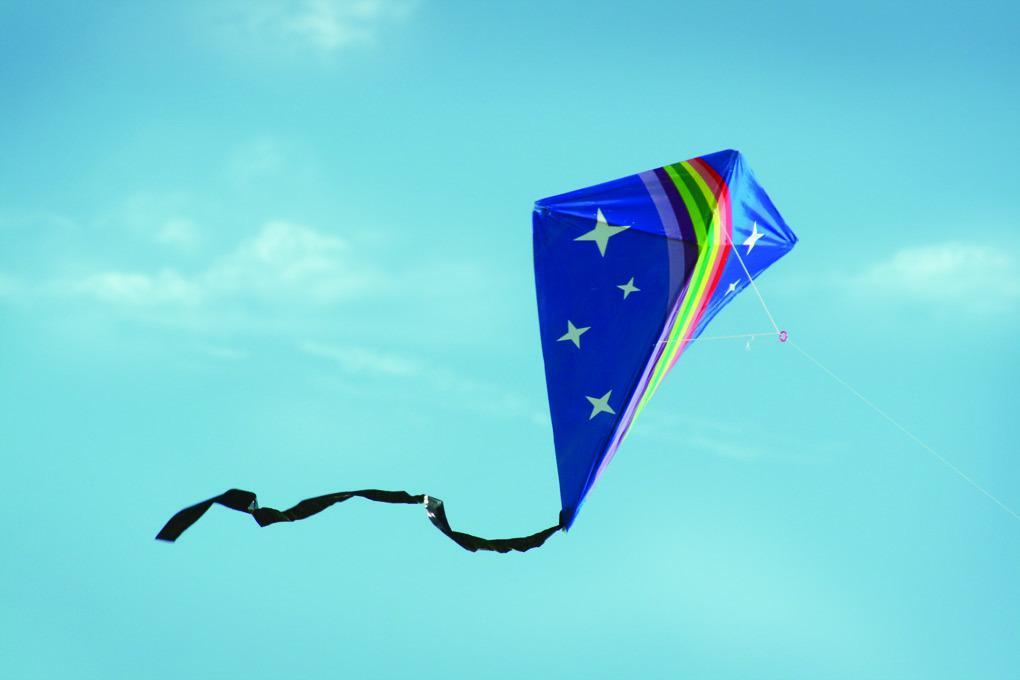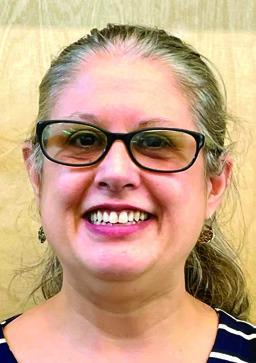
April is National Kite Month.
Photo from Metro Creative

SAN MARCOS PUBLIC LIBRARY
625 E. HOPKINS ST.
512-393-8200
Answers to Go
Q.I saw that the library will have a kite exhibit this summer called “The Sacred Springs.” How are kites associated with the springs?
A. This summer, kites will be flying inside the library. The art installation “Sacred Springs Kite Exhibition” is the inaugural event for the “Art4Water” program sponsored by the Watershed Association (watershedassociation. org). The exhibit will be at the library, Activity Center and Meadows Center in San Marcos from May to September. Join us for the Gallery Opening Night on May 5, 6 – 9 p.m. here at the San Marcos Public Library (625 E Hopkins St.).
The purpose of the exhibition is to raise awareness of threatened Texas springs and the vital connection of water to life. In the future, Art-4Water plans to offer nature-based artist residencies, youth programming, retreats and unique exhibitions that turn to our community’s artists as important leaders in conservation. The Watershed Association is a non-profit organization located in Wimberley, founded to protect water through land conservation and education across the Hill Country. As an initiative of the Watershed Association, Art4Water advocates for environmental protection through the lens of art. As stated on their website:
The Sacred Springs Kite Exhibition seeks to raise awareness of threatened Texas springs and the vital connection of water to life. Hanging like an oasis in the sky, 50+ water-inspired art kites bring together diverse communities around Texas’ great springs — their history, their value and the threats to their existence… Art4Water recognizes that our own human health is deeply intertwined with our planet’s health and that we must regenerate our own spirits simultaneously with the regeneration of our natural environments.
“Sacred Springs” recalls the reverence of indigenous people and an enduring mystical connection with the source of life. Water falls as rain from the sky, filters into the ground and emerges later through cracks and openings to form the great river basins.
Kites have been used by humans, in one way or another, for almost three thousand years. No one is sure who first used them, but the consensus by historians is that they were invented by the Chinese. The Chinese began with bamboo frames covered with silk, then paper. The Japanese, Koreans and Egyptians were also early kite designers.
At first, kites were used as tools, often by the military. A Chinese general, around 200 BCE is credited with using a kite to estimate the distance between his forces and the walls of an enemy castle, so that he could construct a tunnel of the correct length. At about the same time, another general attached humming devices to kites, which were flown over his enemies at night, making them think that they were being attacked by evil spirits. Japanese prints show large kites carrying archers who fired down on their enemies. (Morgan).
Kites have also been used as research tools. In the late 13th century (1295) European explorer, Marco Polo, described in his book the man-lifting capabilities of kites after seeing Chinese merchants using them to determine whether a voyage would be prosperous or not. In the mid-18th century, two Scotsmen conducted an experiment to measure temperature at various altitudes. In the United States, the most famous use of a kite was by Benjamin Franklin. He set out in 1752 to prove that lighting was the same as generated electricity and not the wrath of God. Perhaps one of the most important uses of kites was to test objects in flight — a precursor to the study of modern aeronautics.
The library will not only host the gallery opening on May 5, but we will have a kite making program on May 7 at 2 p.m. Participation is limited, so register for the program by calling the library at 512-393-8200.
• Morgan, P., & Morgan, H. (1992). Chapter 1. in T “The ultimate kite book” (pp. 8–10). essay, Simon and Schuster.
Suzanne Sanders is the columnist for the library. She is the Community Services Manager for the San Marcos Public Library and came from the Austin Public Library in 2015 after having served there as a librarian for over 20 years. She gratefully accepts your questions for this column.











